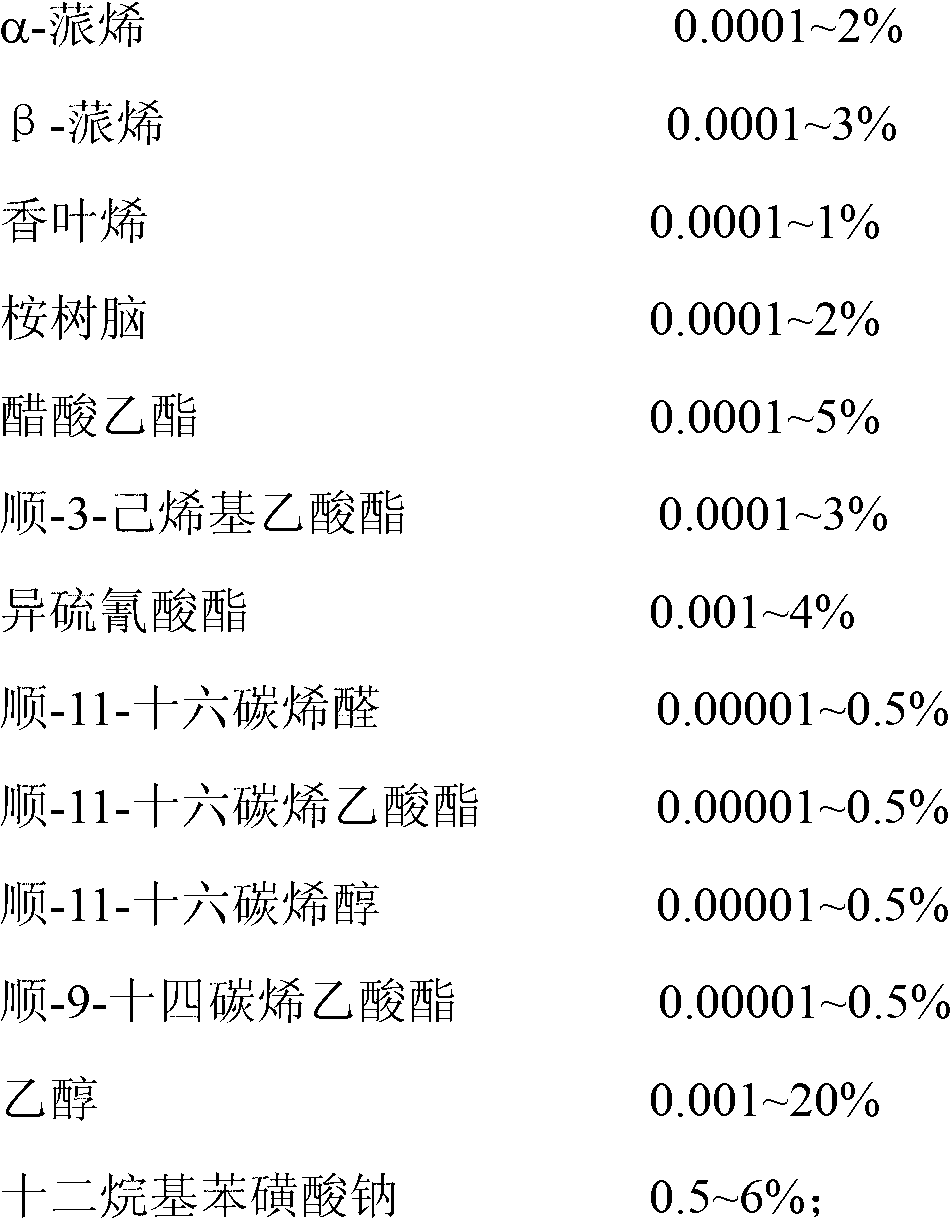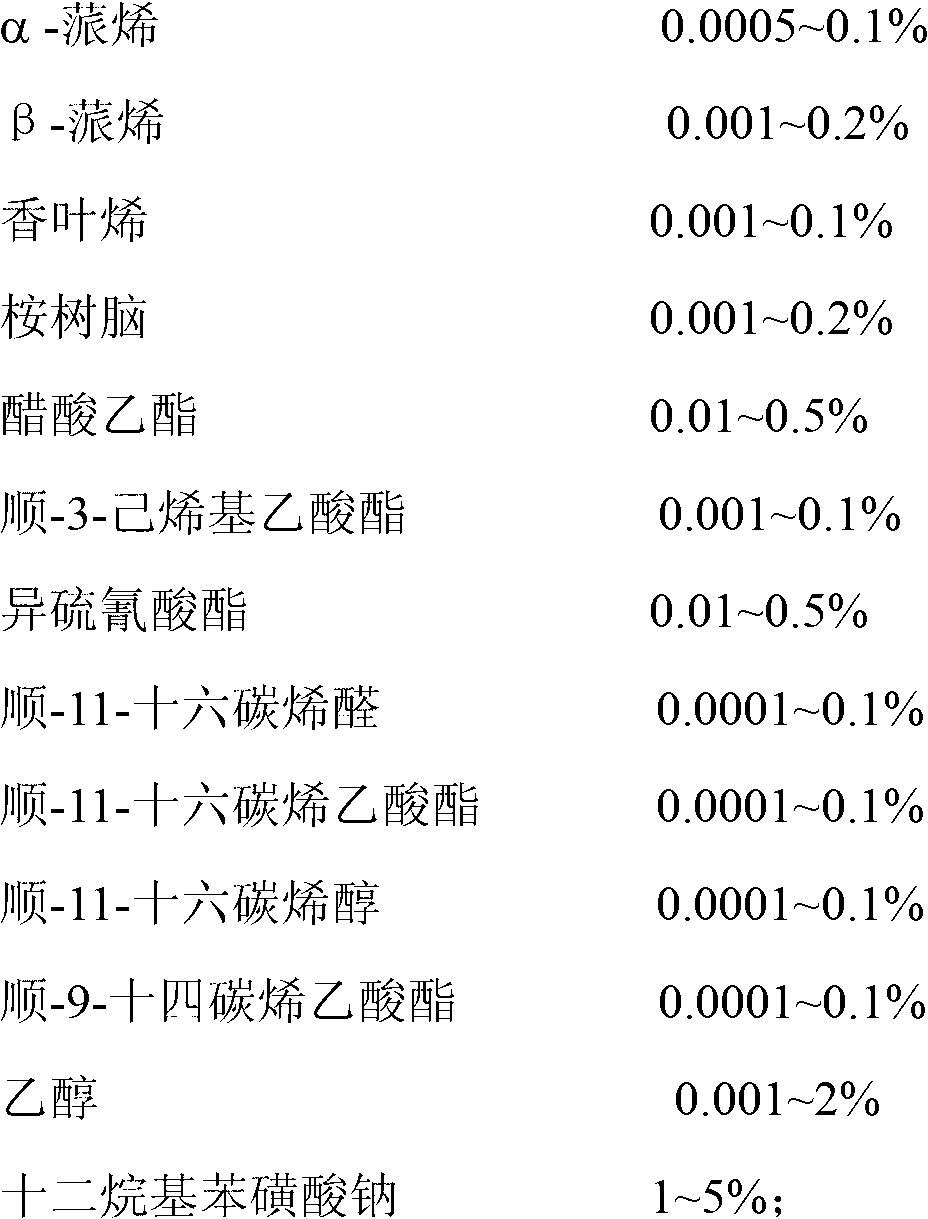Diamondback moth trapping device
A technology of traps and diamondback moths, applied in the directions of attracting pests, devices for catching or killing insects, animal repellents, etc., can solve the problems of chemical agents polluting the environment, chemical agents producing resistance, etc., and achieve no harm to humans and animals Poisonous, attractive, and easy to use effects
- Summary
- Abstract
- Description
- Claims
- Application Information
AI Technical Summary
Problems solved by technology
Method used
Image
Examples
Embodiment 1
[0021] A diamondback moth trap, the trap includes a cylinder, a sticky board and an insect trap container are arranged inside the cylinder, an attractant is contained in the insect trap container, and the attractant is composed of the following raw materials in mass ratio:
[0022]
[0023] The above-mentioned raw materials are mixed as follows: each component (α-pinene, β-pinene, myrcene, eucalyptol, cis-3-hexenyl acetate, isothiocyanate ester, cis-11-hexadecenal, cis-11-hexadecenyl acetate, cis-11-hexadecenyl alcohol, cis-9-tetradecenyl acetate) dissolved in the formula volume ethyl acetate and ethanol, mixed with the formula amount of sodium dodecylbenzene sulfonate and the formula amount of water, then filled in plastic bottles, and used with traps or insect trap lamps to prevent and control small vegetables moth hazard.
Embodiment 2
[0025] A diamondback moth trap, the trap includes a cylinder, a sticky board and an insect trap container are arranged inside the cylinder, an attractant is contained in the insect trap container, and the attractant is composed of the following raw materials in mass ratio:
[0026]
[0027] The above-mentioned raw materials are mixed as follows: each component (α-pinene, β-pinene, myrcene, eucalyptol, cis-3-hexenyl acetate, isothiocyanate ester, cis-11-hexadecenal, cis-11-hexadecenyl acetate, cis-11-hexadecenyl alcohol, cis-9-tetradecenyl acetate) dissolved in the formula volume ethyl acetate and ethanol, mixed with the formula amount of sodium dodecylbenzene sulfonate and the formula amount of water, then filled in plastic bottles, and used with traps or insect trap lamps to prevent and control small vegetables moth hazard.
Embodiment 3
[0029] A diamondback moth trap, the trap includes a cylinder, a sticky board and an insect trap container are arranged inside the cylinder, an attractant is contained in the insect trap container, and the attractant is composed of the following raw materials in mass ratio:
[0030]
[0031]
[0032] The above-mentioned raw materials are mixed as follows: each component (α-pinene, β-pinene, myrcene, eucalyptol, cis-3-hexenyl acetate, isothiocyanate ester, cis-11-hexadecenal, cis-11-hexadecenyl acetate, cis-11-hexadecenyl alcohol, cis-9-tetradecenyl acetate) dissolved in the formula volume ethyl acetate and ethanol, mixed with the formula amount of sodium dodecylbenzene sulfonate and the formula amount of water, then filled in plastic bottles, and used with traps or insect trap lamps to prevent and control small vegetables moth hazard.
PUM
 Login to View More
Login to View More Abstract
Description
Claims
Application Information
 Login to View More
Login to View More - R&D
- Intellectual Property
- Life Sciences
- Materials
- Tech Scout
- Unparalleled Data Quality
- Higher Quality Content
- 60% Fewer Hallucinations
Browse by: Latest US Patents, China's latest patents, Technical Efficacy Thesaurus, Application Domain, Technology Topic, Popular Technical Reports.
© 2025 PatSnap. All rights reserved.Legal|Privacy policy|Modern Slavery Act Transparency Statement|Sitemap|About US| Contact US: help@patsnap.com



